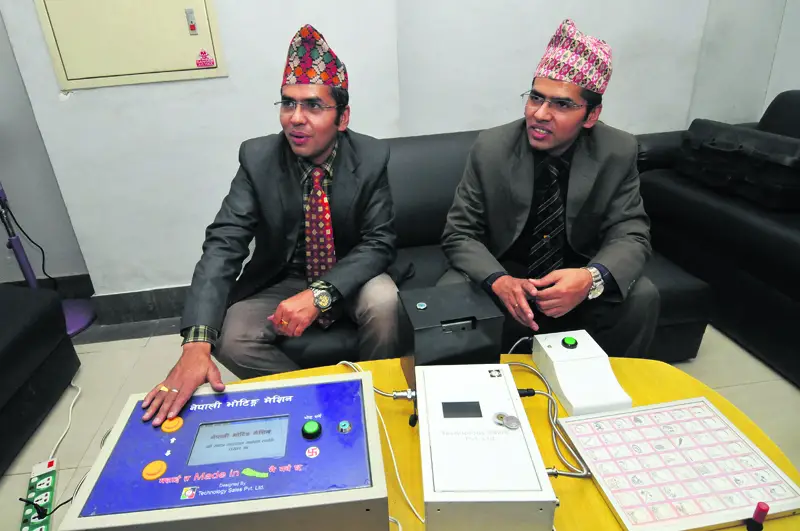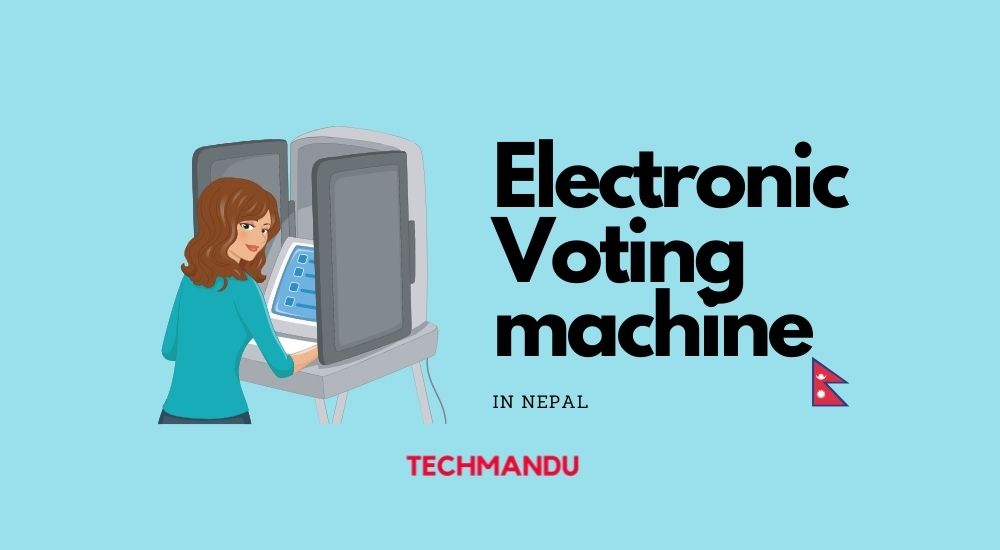The government is unlikely to use electronic voting machines this upcoming local level election slated for Baisakh 30. Elections Commission was prepared to use domestically manufactured EVMs but as the questions offer their efficacies remain unanswered, the likelihood of their use in this election has decreased from slim to none.
The cabinet of PM Sher Bahadur Deuba has announced that local elections will be held on Baisakh 30 of 2079. That is three months from now. But the National Election Commission’s preparations for it have been steady for months. And the news of e-voting had made abuzz for months but the hopes of a digital election has been out of sight, almost.
National Election Commission had announced that it will implement electronic voting machines for the next local elections. Also called e-voting, the digital system has been implemented in the party’s general conventions but the federal level use of electronic machines would have been something anew.
Electronic Voting Machines in Local Level Elections
The Commissioner of NEC Dinesh Thapaliya had said a few local bodies in the valley would implement the voting machines.
The commissioner had remarked that the commission is taking notes on making the voting system more techno-friendly. But due to the short time available, it is not possible to import machines for use. This is the reason the commission planned to use the voting machines built in Nepal. They were planning on using voting machines designed by Ram-Lakshman Innovation Pvt. Ltd.

The company was tipped to ready around 1500 – 2000 voting machines for the local elections meaning around 3 lakh voters could cast their votes electronically. There were also plans to ‘go digital’ in other local levels beyond the valley too.
The government has announced that the local polls will take place on Baisakh 30 through 753 on a single day. Meanwhile, the election commission has forwarded a request to NTA to connect all those local bodies by internet before the election day.
As local polls go digital this Baisakh 30, we would love to cast light on electronic voting machines, their functions, pros, and cons. First of all, let’s begin with the customary question.
Also read: National ID Card Project Speeds Up | 30 Lakh to Receive the Smart IDs First
What Are Electronic Voting Machines?
Also called EVMs, these are digital machines that record the votes which are also cast electronically by the voters. In a traditional voting system, a voter casts a vote on a ballot paper and drops it inside a box. The voter marks his/her favorite candidate with his fingerprint on the symbol representing the candidate or the party.
In electronic voting, the buttons come into play. A voter pushes the button that corresponds to the candidate or the party of his/her choice. Once the vote is cast, it is counted digitally.
These buttons can be physical or touch screens. But better, a mouse can also be used to navigate through the options.
Operation Mechanism: Control Unit and Ballot Unit
EVMs consist of two units – Control Unit, and Ballot Unit. A polling officer or polling assistant is responsible to handle the control unit. The ballot unit goes inside the voting compartment.
When the polling offer or the assistant activates a ballot, a voter inside can cast the vote on the candidate or the symbol of the party on the control unit. The control unit contains a memory system to record votes.
An EVM can run on battery or on a direct power supply and can register hundreds to 1 or 2 thousand votes in its memory. If the power supply fails, another voting machine can resume from the previous count.
Check out: How To Activate Mobile Internet in Ncell, NTC, and Smart Cell
Advantages
- EVMs make voting simpler. No ballet paper, no physical marking, just choose your candidate or party and let the system handle it all.
- Chances of duplication is eliminated as one authenticated voter can only cast votes once.
- Counting of votes is easier and faster, hence faster results announcement is possible.
- Cuts down resources either spend on printing physical ballot papers, inks, ballot boxes, transportation etc.
- Friendly for physically-challenged people.
- Audio or visual indicator to notify that the vote has been cast.
Disadvantages
- With all advantages, there are possible disadvantages with EVMs too. they are:
- Literacy with digital tools is required which may become a hindrance for many.
- As it works on electronics, power outage could cause issues in the voting.
- Hackers can breach the system hence vote manipulation.
- These machines are very costly, one unit may cost $2000 above. Ram-Lakshman made EVMs cost around 1 lakh per unit.
Conclusion
Sooner or later, EVMs are going to be part of our electoin systems. The issue that remains at the core is the get goings with the tools. The system is new to a large mass of voters and they must be trained in advance to avoid votes mishap. The upcoming local-level elections will use the system in small-scale but will set off for more in other elections too.
How convinced are you of these digital machines? Would you trust them with your invaluable vote? Drop your opinion in the comments below.



